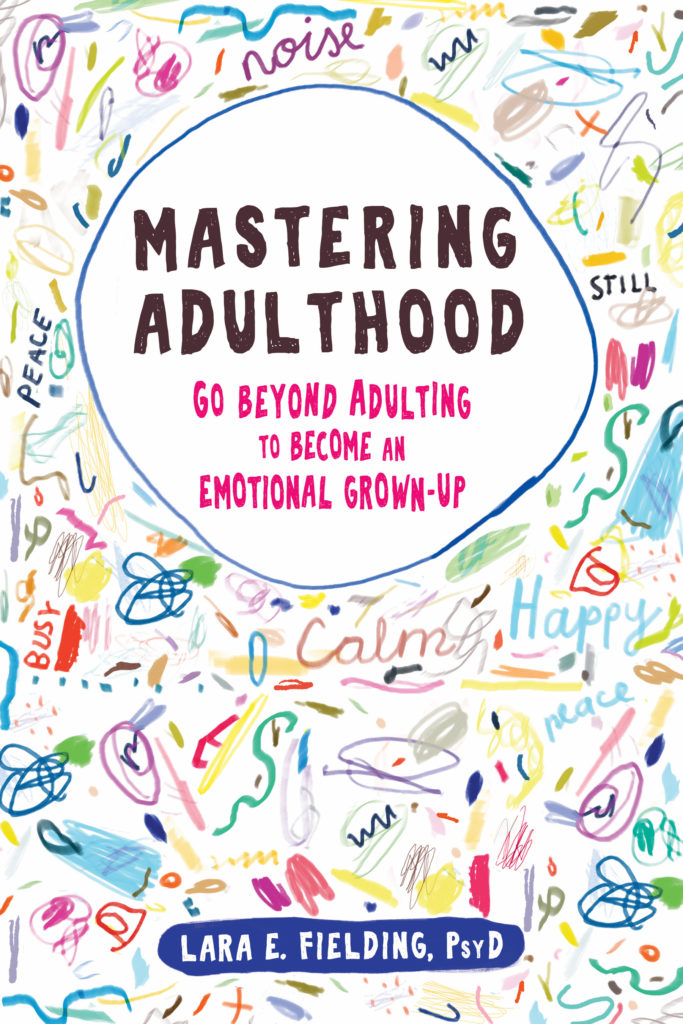So many of us have experienced some form of loss during the Covid-19 crisis. Many a milestone has been cancelled: graduations, weddings, and saddest of all, missed opportunities to say good bye to loved ones who have passed.
Sadness is the organic emotion we feel when we experience a loss. Like all of our emotions, the presence of sadness signals us to take an action to preserve ourselves. In the case of sadness, the action indicated is to slow down, to heal, to grieve, and to seek connection and support from others in our tribe.
But what happens when parts, or all of those signals are ignored, suppressed or just impeded by the facts of the situation?
Inhibited Grieving and Emotion Dys-regulation
Inhibited grief is a term coined by Dr. Marsha Linehan, developer of DBT therapy, to describe a way in which some people react to a chronically invalidating environment and/or unrelenting crises in their lives. It can happen when we’re faced with one traumatic loss after another, without the opportunity to pause, and engage in the above noted grieving processes.
It can show up as a kind of numbing to emotional pain. One might even feel sort of detached. From the outside, facial expressions and body language do not reflect the internal turmoil. This detachment means the healing actions needed, to mourn and connect with others, are not taken. The compassion we need, is not given.
The cost of inhibited grief is that the emotional system gets out of sync, it gets dys-regulated.
The Role of Sadness in your Psychological Health
We all have a tendency to try to avoid and control our sadness because, let’s face it, sadness sucks! When we’re really feeling it, we feel heavy, tired, teary, sensitive, maybe even hopeless. Being sad is simply uncomfortable.
Here’s how sadness plays out in your emotional system.
Trigger: There is a loss of something that was important to you. This might be the cancellation of an important life event, an actual death of a person you cared for, or even the loss of an idea, belief or hope you held dearly.
This activates your mind-body vehicle to either react automatically or respond skillfully.
In a psychologically flexible system, the skillful response to sadness is to honor it: slowing down, validating your feelings, and allowing the mourning to take place. This allows the natural and justified emotion to do its job; to inform you and communicate to others that there is a need. After which it can pass naturally, so you may return to your other life pursuits. This short clip from the movie Inside Out perfectly demonstrates this process.
Sadness as a Place of Connection
Our sadness is also a place of connection to others. It creates bonds in our Universal humanity. If you’ve ever felt the crushing weight of loss, the hot face of yearning for the loss to be restored, the breathless sobs of sadness’s pain, then you are very likely also a highly empathic person.
The expressive components of sadness communicate to others that we need support. This is another reason it can be difficult to access. Sadness makes us feel vulnerable. If we grew up in an environment where sadness and vulnerability were invalidated (dismissed, mocked, or even taken advantage), then allowing sadness can feel particularly threatening.
In fact, as an adult, if we don’t find ourselves in a place where caring others are available, showing our sadness may not be a good idea.
When Emotion Regulation turns into Emotional Suppression
Because sadness feels so crummy, and can make us vulnerable, humans have gotten very good at creating and accessing pleasant and distracting experiences. We’re so good at distracting and finding pleasure, we’re no longer very good at allowing discomfort in.
We just keep developing more and more creative ways to NOT feel our sadness. Until….
One day, something happens. A genuine, downright devastating situation. A death, a chronic or fatal illness (in ourselves or a loved one), or yes, a pandemic.
What do you think happens then, if you have never truly had the opportunity to flow through the process of sadness and grief?
Depression and Post Traumatic Stress
Inhibited grieving, also called ‘experiential avoidance’, will eventually break down under the pressure of a crisis, or indeed express itself as unrelenting crises in our lives.
One of the ways depression sets in is when your mind-body vehicle can no longer hold all those bubbles of pain under the water. If you’ve never experienced sadness, you simply have not learned the skill of walking through emotional pain.
Trauma from unprocessed pain comes in the form of repeated crises in your life. Marsha Linehan describes this as the opposing tension to the inhibited grief. It’s as if the ache is living inside, and searching for a situation to project itself upon. So it may find a way to express itself in a situation that is less scary to us than the original emotional injury.
Practicing with Pain and Sadness
I’m imagining you there, reading these words, and cringing as you think, “Oh great, is she going to suggest I ‘practice with my pain’?
Yup! That is what I’m asking. But first I’d like you to consider your beliefs about sadness. Is sadness all bad?
PAUSE: Can you identify ways in which sadness is additive in one’s life, in your life? Take a moment to consider.
If you agree that sadness actually has an important place in our lives, then maybe there can be a place for it in your life too. See if you can schedule practice moments, in just bit size morsels.
LET’S PRACTICE:
Find a time this week when you can listen to a favorite sad song. Or bring to mind a troubling event. To practice, allow the waves of sadness to come into awareness. Observe, all the components of your experience: What are your thoughts? How does your body feel? Is there an action impulse? As best you can stay with the sadness with an attitude of non judgmental compassion.
This simple act of self validation may seem daunting at first. Your mind may be saying, “Hell no! I know that I can’t handle the sadness.” But isn’t that just more of your mind getting in the way, trying to protect you? Based on past experience. Only with practice, now, in the present moment, and as a choice can you learn, from your own experience, that sadness can be acceptable and even healing.
If you’d like to learn the step by step process for how to build a life you love, find your spark, and the skills you need to keep moving forward, I hope you’ll check out Mastering Adulthood: Go Beyond Adulting to Become and Emotional Grownup !
To get even more helpful skills for Mastering Adulthood, sign up for the Mindful-Mastery SKILL WEEKLY newsletter, or follow me on Facebook, Twitter, or Instagram. Or YouTube for skills videos!


